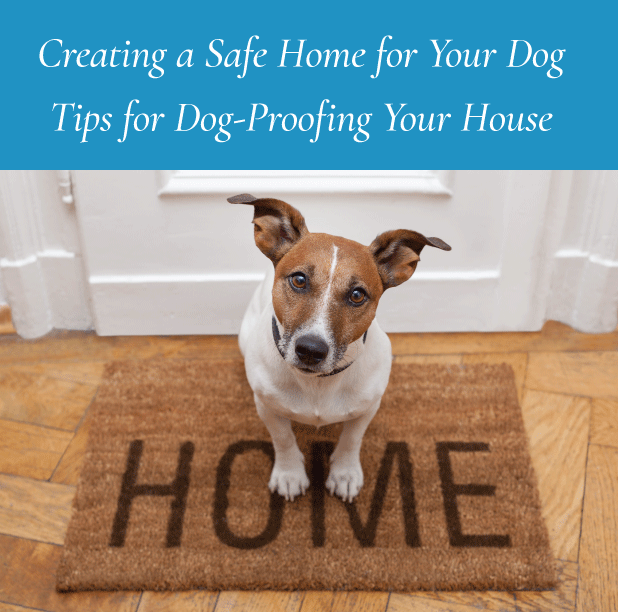As a responsible dog owner, it's essential to create a safe home environment for your furry friend. In this blog post, we'll provide you with valuable tips for dog-proofing your house to prevent accidents and keep your dog safe and secure.
Identify Hazards:
Take a thorough walk-through of your home and identify potential hazards such as loose electrical cords, toxic plants, cleaning supplies, and small objects that your dog could swallow. Address these hazards by securing cords, removing toxic plants, and storing hazardous materials out of your dog's reach.
Secure Cabinets and Trash Bins:
Dogs are notorious for getting into cabinets and trash bins. Use childproof latches to secure cabinets containing cleaning supplies or food items that could be harmful to your dog. Invest in dog-proof trash bins or place them in an area that is inaccessible to your dog.
Protect Cords and Wires:
Dogs, especially puppies, may be tempted to chew on cords and wires, posing a risk of electrical shock. Protect cords by using cord covers or running them through PVC pipes to prevent your dog from accessing them.
Fence and Gate Safety:
If you have a backyard, ensure that your fence is secure and free from any gaps or holes that your dog could escape through. Check gates regularly to make sure they latch properly and install self-closing mechanisms if needed.
Avoid Toxic Substances:
Many household items are toxic to dogs, including certain foods, medications, cleaning products, and chemicals. Familiarize yourself with the list of toxic substances and ensure they are stored securely out of your dog's reach.
Block Off Restricted Areas:
Identify areas of your home that you want to keep off-limits for your dog, such as the kitchen, bedrooms, or specific rooms. Use baby gates or barriers to prevent access to these areas.
Secure Windows and Balconies:
Dogs can be curious and may try to jump out of windows or balconies. Ensure that windows are securely screened and balconies have appropriate barriers to prevent accidents.
Remove Choking Hazards:
Keep small objects, children's toys, and other choking hazards off the floor and out of your dog's reach. Dogs may inadvertently swallow these items, leading to choking or digestive blockages.
Provide a Safe Space:
Create a safe and comfortable space for your dog to retreat to when they need alone time or when you are away. Provide a cozy bed, fresh water, and safe toys to keep them entertained.
Supervise and Monitor:
While dog-proofing your home is essential, it's equally important to supervise and monitor your dog's activities, especially during the initial stages. This will allow you to identify any potential hazards or behavior issues that need to be addressed.
Conclusion:
By taking proactive measures to dog-proof your home, you can minimize potential risks and create a safe environment for your beloved pet. Remember that ongoing supervision and monitoring are crucial for maintaining a safe living space for your dog.

